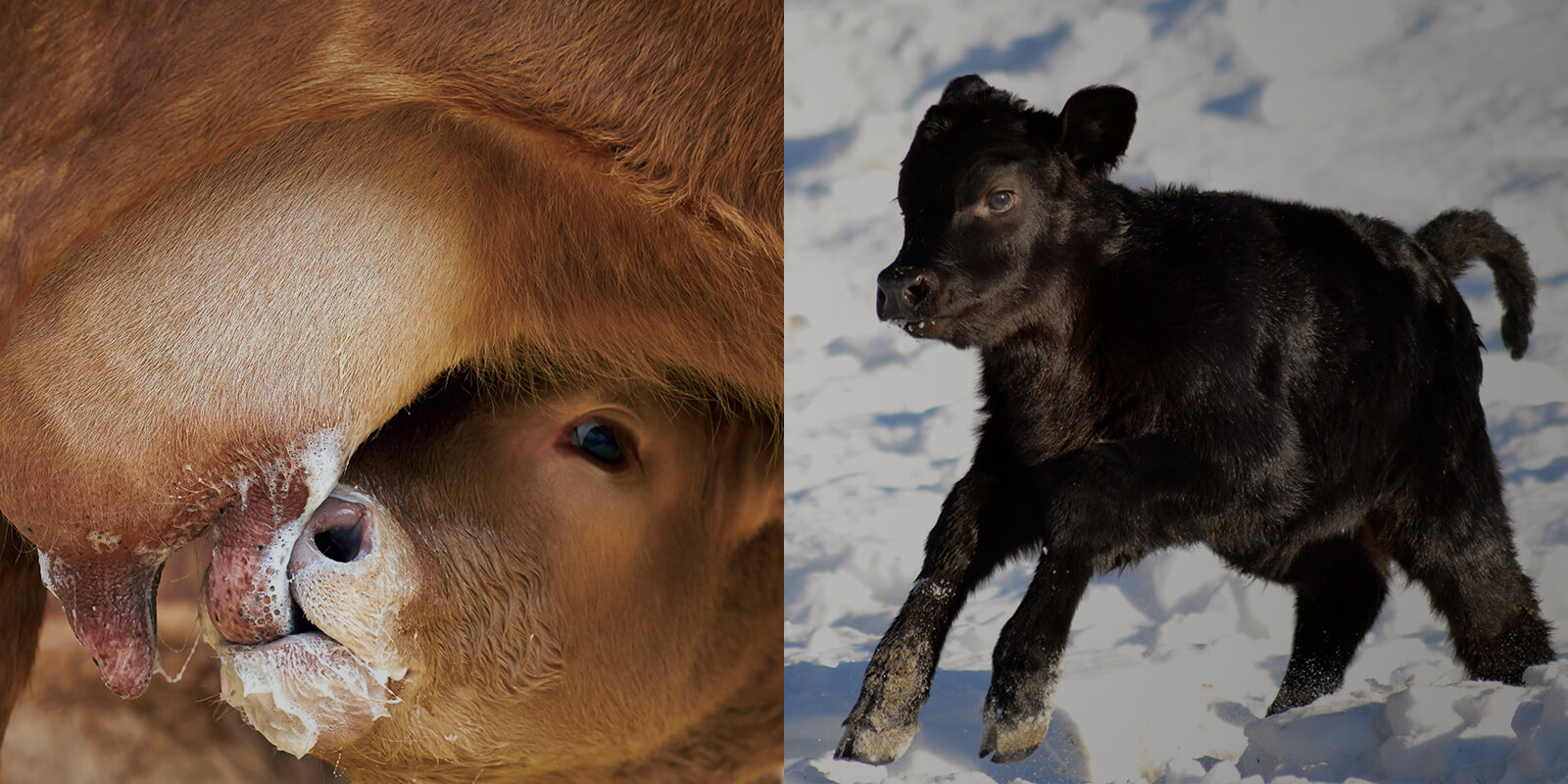11 Jan Times of Change
Spring or Fall Calving, or Somewhere in Between: What is the Best Fit for Your Cow/Calf Operation?
If you are like the majority of producers, calving season occurs in early spring, sometime between March and April – a timing hinged on tradition and a decision made by generations before. But, as our industry evolves, so too does our knowledge, along with different pressures and new opportunities. It may no longer make sense to continue to do things the way we do them simply because that’s the way they have always been done.
These insights, markets and opportunities, are bringing a change of season for some in the cow/calf industry. As with most decisions for cow/calf producers, there are many factors to consider when selecting a calving season. Each operation must determine the best fit, based on resources, as well as careful consideration of managing outputs and inputs.
We have outlined some of the challenges and opportunities when comparing fall and spring calving seasons for you below to support the evaluation of what calving season best optimizes your operation.
The Benefits of Fall Calving
Market Advantage
- Fall-born calves enter the market when supply is low and demand is higher (especially for lightweight calves for summer grazing), fetching higher prices.
Cows with Higher Body Condition at Calving
- Since fall cows enter the calving season following summer grazing without a nursing calf at their sides, they are generally in higher body condition. As body condition at calving has a direct effect on the length of the anestrus period following calving, this can result in earlier conception rates.
Weather
- Although Mother Nature is always unpredictable, calving is generally less erratic in the fall than in the spring months. Most baby calves will be delivered on warm days or cool nights under relatively dry conditions, resulting in better survivability and overall health.
Forage
- Calves born in the fall are exposed to optimal forage, both in quality and quantity. At 8-9 months, calves will be at an age where they are capable of grazing, leading to optimized weight gains.
Lower Birthweights
- As the saying goes; “The colder it is, the deeper the blood runs.” In addition to a breeding program that utilizes reliable data and genetics, calving assistance rates have shown to be lower in fall calving heifers than in spring calving heifers. This is supported by evidence that shows that environmental temperature has an impact on uterine blood flow, which in turn, is proven to affect birthweight.
The Challenges of Fall Calving
Cost of Winter Feeding
- Feeding costs are often the primary challenge for fall calving as compared to spring calving, when cows are reliant on grazing summer pasture. Nutrient requirements for lactating cows are about 25 to 30 per cent higher than for dry cows, which contributes to feed costs for fall calving.
Feed Resources
- Available feed resources, in both quality and quantity, must be carefully and thoroughly reviewed when considering a shift to fall calving. This should include working with a nutritionist to ensure that you don’t come up short in quality or quantity.
The Benefits of Spring Calving
Market Placement
- Spring calves can be weaned off grass in August/September and are available as 650 lb feedlot replacements.
- Spring calves generally bring a higher gross revenue at time of sale.
- Weaned calves are older/heavier and therefore less stress prone for feedlots.
Optimized Resources & Minimized Inputs
- For cow/calf producers that have the ability to utilize summer forestry or rented pastures, spring calving can optimize available resources and minimize feeding outputs required for overwintering cow/calf and feeder calves.
Breeding Efficiencies
- Re-breeding can be controlled prior to sending cows to pasture.
- Labour
- Spring calving occurs prior to seeding. As a result, spring calving minimizes interference with other mixed farm operations and labour demands, especially during fall harvest.
The Challenges of Spring Calving
Weather
- Weather is one of the biggest challenges for cow-calf producers who calve in the spring. Young, lightweight calves are more susceptible to cold temperatures and snow. Newborn calves born into adverse weather conditions can lead to higher death loss than those born in the Fall.
Markets
- The fall calf market is high in supply, bringing lower market prices per pound than lighter fall calves, which generally retrieve more dollars per pound. An evaluation of what your cost per calf is will pinpoint which calf crop is most profitable.
Calving Assistance
- Based on the time of year, spring can bring harsh weather conditions that require more hands-on attention when it comes to the health and welfare of calves. Below freezing temperatures often require relocating calves to shelter. This can make for long days and even longer nights than calves born in the fall.
An optimal calving season may not mean a significant change to your operation. In fact, it may only require a slight change to capture market opportunity or align better with the resources and the unique demands of your business. This might mean simply adjusting your breeding exposure dates forward or back by one or two weeks or even three. These slight adjustments can make a big impact to the efficiencies and viability of your operation. Looking at opportunities or different ways of doing things can lead to improvements in sustainability and viability, and overall, the bottom line.
Mature cows can withstand such conditions due to their larger bodyweight-to-surface area ratio, and because the heat of fermentation from the rumen that is produced when digesting high-fiber feeds provides thermal stability.
Smaller calves do not have the same advantage, and therefore, require a higher level of nutrient intake for maintenance as compared to the productive function of growth.
Again, this may be dependent on the environment where the herd is located, but this factor can be a challenge to achieving desired weaning weights in cold environments.





Sorry, the comment form is closed at this time.